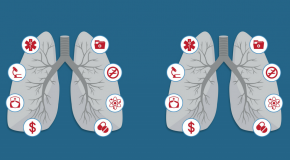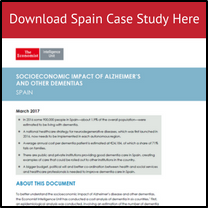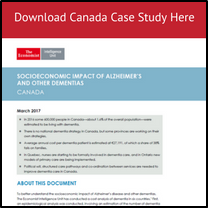Healthcare perspectives from The Economist Intelligence Unit
Assessing the Socioeconomic Impact of Alzheimer's and other Dementias: Spain
Related content

Value-based healthcare in Sweden: Reaching the next level
The need to get better value from healthcare investment has never been more important as ageing populations and increasing numbers of people with multiple chronic conditions force governments to make limited financial resources go further.
These pressures, along with a greater focus on patient-centred care, have raised the profile of VBHC, especially in European healthcare systems. Sweden, with its highly comprehensive and egalitarian healthcare system, has been a leader in implementing VBHC from the beginning, a fact that was underscored in a 2016 global assessment of VBHC published by The Economist Intelligence Unit.
This paper looks at the ways in which Sweden has implemented VBHC, the areas in which it has faced obstacles and the lessons that it can teach other countries and health systems looking to improve the value of their own healthcare investments.

Breast cancer patients and survivors in the Asia-Pacific workforce
With more older women also working, how will the rising trend of breast cancer survivorship manifest in workplace policies, practices and culture? What challenges do breast cancer survivors face when trying to reintegrate into the workforce, or to continue working during treatment? How can governments, companies and society at large play a constructive role?
This series of reports looks at the situation for breast cancer survivors in Australia, New Zealand and South Korea. It finds that while progress has been made, more needs to be done, particularly in South Korea, where public stigma around cancer remains high.
The Cost of Silence
Cardiovascular diseases levy a substantial financial toll on individuals, their households and the public finances. These include the costs of hospital treatment, long-term disease management and recurring incidence of heart attacks and stroke. They also include the costs of functional impairment and knock-on costs as families may lose breadwinners or have to withdraw other family members from the workforce to care for a CVD patient. Governments also lose tax revenue due to early retirement and mortality, and can be forced to reallocate public finances from other budgets to maintain an accessible healthcare system in the face of rising costs.
As such, there is a need for more awareness of the ways in which people should actively work to reduce their CVD risk. There is also a need for more primary and secondary preventative support from health agencies, policymakers and nongovernmental groups.
To inform the decisions and strategies of these stakeholders, The Economist Intelligence Unit and EIU Healthcare, its healthcare subsidiary, have conducted a study of the prevalence and costs of the top four modifiable risk factors that contribute to CVDs across the Asian markets of China, Australia, Hong Kong, Japan, Singapore, South Korea, Taiwan and Thailand.
Download the report to learn more.
Assessing the Socioeconomic Impact of Alzheimer's and other Dementias: Canada
Related content

Value-based healthcare in Sweden: Reaching the next level
The need to get better value from healthcare investment has never been more important as ageing populations and increasing numbers of people with multiple chronic conditions force governments to make limited financial resources go further.
These pressures, along with a greater focus on patient-centred care, have raised the profile of VBHC, especially in European healthcare systems. Sweden, with its highly comprehensive and egalitarian healthcare system, has been a leader in implementing VBHC from the beginning, a fact that was underscored in a 2016 global assessment of VBHC published by The Economist Intelligence Unit.
This paper looks at the ways in which Sweden has implemented VBHC, the areas in which it has faced obstacles and the lessons that it can teach other countries and health systems looking to improve the value of their own healthcare investments.

Breast cancer patients and survivors in the Asia-Pacific workforce
With more older women also working, how will the rising trend of breast cancer survivorship manifest in workplace policies, practices and culture? What challenges do breast cancer survivors face when trying to reintegrate into the workforce, or to continue working during treatment? How can governments, companies and society at large play a constructive role?
This series of reports looks at the situation for breast cancer survivors in Australia, New Zealand and South Korea. It finds that while progress has been made, more needs to be done, particularly in South Korea, where public stigma around cancer remains high.
The Cost of Silence
Cardiovascular diseases levy a substantial financial toll on individuals, their households and the public finances. These include the costs of hospital treatment, long-term disease management and recurring incidence of heart attacks and stroke. They also include the costs of functional impairment and knock-on costs as families may lose breadwinners or have to withdraw other family members from the workforce to care for a CVD patient. Governments also lose tax revenue due to early retirement and mortality, and can be forced to reallocate public finances from other budgets to maintain an accessible healthcare system in the face of rising costs.
As such, there is a need for more awareness of the ways in which people should actively work to reduce their CVD risk. There is also a need for more primary and secondary preventative support from health agencies, policymakers and nongovernmental groups.
To inform the decisions and strategies of these stakeholders, The Economist Intelligence Unit and EIU Healthcare, its healthcare subsidiary, have conducted a study of the prevalence and costs of the top four modifiable risk factors that contribute to CVDs across the Asian markets of China, Australia, Hong Kong, Japan, Singapore, South Korea, Taiwan and Thailand.
Download the report to learn more.
Assessing the Socioeconomic Impact of Alzheimer's and other Dementias: UK
Related content

Value-based healthcare in Sweden: Reaching the next level
The need to get better value from healthcare investment has never been more important as ageing populations and increasing numbers of people with multiple chronic conditions force governments to make limited financial resources go further.
These pressures, along with a greater focus on patient-centred care, have raised the profile of VBHC, especially in European healthcare systems. Sweden, with its highly comprehensive and egalitarian healthcare system, has been a leader in implementing VBHC from the beginning, a fact that was underscored in a 2016 global assessment of VBHC published by The Economist Intelligence Unit.
This paper looks at the ways in which Sweden has implemented VBHC, the areas in which it has faced obstacles and the lessons that it can teach other countries and health systems looking to improve the value of their own healthcare investments.

Breast cancer patients and survivors in the Asia-Pacific workforce
With more older women also working, how will the rising trend of breast cancer survivorship manifest in workplace policies, practices and culture? What challenges do breast cancer survivors face when trying to reintegrate into the workforce, or to continue working during treatment? How can governments, companies and society at large play a constructive role?
This series of reports looks at the situation for breast cancer survivors in Australia, New Zealand and South Korea. It finds that while progress has been made, more needs to be done, particularly in South Korea, where public stigma around cancer remains high.
The Cost of Silence
Cardiovascular diseases levy a substantial financial toll on individuals, their households and the public finances. These include the costs of hospital treatment, long-term disease management and recurring incidence of heart attacks and stroke. They also include the costs of functional impairment and knock-on costs as families may lose breadwinners or have to withdraw other family members from the workforce to care for a CVD patient. Governments also lose tax revenue due to early retirement and mortality, and can be forced to reallocate public finances from other budgets to maintain an accessible healthcare system in the face of rising costs.
As such, there is a need for more awareness of the ways in which people should actively work to reduce their CVD risk. There is also a need for more primary and secondary preventative support from health agencies, policymakers and nongovernmental groups.
To inform the decisions and strategies of these stakeholders, The Economist Intelligence Unit and EIU Healthcare, its healthcare subsidiary, have conducted a study of the prevalence and costs of the top four modifiable risk factors that contribute to CVDs across the Asian markets of China, Australia, Hong Kong, Japan, Singapore, South Korea, Taiwan and Thailand.
Download the report to learn more.
Tackling the burden of prostate cancer in Latin America: The prospects for patient-centred care
Prostate-cancer incidence, prevalence and mortality are rising rapidly in Latin America. Risk factors are highest in Brazil, which has a population that is ageing more rapidly than those elsewhere in Latin America and a greater proportion of males of African descent than in other countries in the region. Studies show that populations of African descent have the highest prostate-cancer incidence rates, for reasons that are still not fully understood. Other risk factors, such as unhealthy diets, are also becoming more prevalent in the region.
Related content

Breast cancer in Asia
The regional rise in age-standardised incidence has been running at four to eight times the global average since the 1990s. Meanwhile, the disease is no longer a concern large of developed countries but has become an increasingly important one in many emerging market states, where it is frequently now the most common form of cancer among females.
This report, Breast Cancer: The challenge and response, written by The Economist Intelligence Unit (EIU) and commissioned by Pfizer, examines the growing health burden of the disease in 10 major Asia-Pacific countries and territories, as well as how health systems are addressing the challenge.
Click here to view: Report | Infographic
Reducing the burden: The economic and social costs of lung cancer in Italy
The incidence of lung cancer is rising in Italy, particularly among women. On the other hand Italy, like many of its European neighbours, is improving the ways that it fights lung cancern, both in a clinical sense and through an array of broader policies. By considering a variety of measures to discourage smoking, and by experimenting with innovative approaches to financing new treatments, Italy is starting to formulate plans to reduce the burdens of the disease.
This study, which assesses the burden of the disease and the policies aimed at reducing it, concludes that stronger policies are needed to wage a successful war on lung cancer in Italy.While important advances are being made in benefits coverage, and in financing clinical innovations, some of the basic ways to tackle the disease receive too little attention. These include recognising the disease's true demographics, and strengthening measures to discourage smoking, a major cause of the illness.

Controlling Cancer
Cancer is a common concern for countries in the Asia-Pacific region, yet treatment of the disease varies markedly among its various healthcare systems. A new study by the Economist Intelligence Unit (EIU)—Controlling cancer: The state of national cancer control plans in Asia, commissioned by Mundipharma— looks at the state of cancer control in Australia, China, India, Indonesia, Malaysia, Myanmar, South Korea, Taiwan, Thailand and Vietnam. Through in-depth desk research and interviews with healthcare officials, the report qualitatively assesses how these countries are dealing with cancer, focusing on similarities and differences in the implementation of National Cancer Control Plans (NCCPs).
The study finds that resources are a key success factor, with the three countries most successful in fighting the disease—Australia, South Korea and Taiwan—also the wealthiest. Within the developed markets studied, quality of governance also plays a crucial role in cancer control: the study highlights that the existence of a NCCP with clear national objectives, quality assurance mechanisms and integrated case management account for close to a quarter of the difference in cancer outcomes.
Wealthy countries might be better at treating cancer but the disease is much more prevalent there: it accounts for between 25% and 30% of deaths in Australia, South Korea and Taiwan compared to 7% in India and 13% in Indonesia.
Tackling the burden of prostate cancer in Latin America: The prospects for patient-centred care
Prostate cancer is placing an ever-growing burden on already strained Latin American healthcare systems, as both the incidence of the disease and mortality rates rise. For the purposes of this report, Latin America encompasses the territory from the northern border of Mexico to the southern tip of South America, including the Caribbean.
Prostate cancer is the leading cause of male cancer-related deaths in the region, and the disease and economic burden is set to rise in tandem with longevity and changes in lifestyle and diet.
More from this series

white paper
Tackling the burden of prostate cancer in Latin America: The prospects for ...
Prostate-cancer incidence, prevalence and mortality are rising rapidly in Latin America. Risk factors are highest in
Related content

Breast cancer in Asia
The regional rise in age-standardised incidence has been running at four to eight times the global average since the 1990s. Meanwhile, the disease is no longer a concern large of developed countries but has become an increasingly important one in many emerging market states, where it is frequently now the most common form of cancer among females.
This report, Breast Cancer: The challenge and response, written by The Economist Intelligence Unit (EIU) and commissioned by Pfizer, examines the growing health burden of the disease in 10 major Asia-Pacific countries and territories, as well as how health systems are addressing the challenge.
Click here to view: Report | Infographic
Reducing the burden: The economic and social costs of lung cancer in Italy
The incidence of lung cancer is rising in Italy, particularly among women. On the other hand Italy, like many of its European neighbours, is improving the ways that it fights lung cancern, both in a clinical sense and through an array of broader policies. By considering a variety of measures to discourage smoking, and by experimenting with innovative approaches to financing new treatments, Italy is starting to formulate plans to reduce the burdens of the disease.
This study, which assesses the burden of the disease and the policies aimed at reducing it, concludes that stronger policies are needed to wage a successful war on lung cancer in Italy.While important advances are being made in benefits coverage, and in financing clinical innovations, some of the basic ways to tackle the disease receive too little attention. These include recognising the disease's true demographics, and strengthening measures to discourage smoking, a major cause of the illness.

Controlling Cancer
Cancer is a common concern for countries in the Asia-Pacific region, yet treatment of the disease varies markedly among its various healthcare systems. A new study by the Economist Intelligence Unit (EIU)—Controlling cancer: The state of national cancer control plans in Asia, commissioned by Mundipharma— looks at the state of cancer control in Australia, China, India, Indonesia, Malaysia, Myanmar, South Korea, Taiwan, Thailand and Vietnam. Through in-depth desk research and interviews with healthcare officials, the report qualitatively assesses how these countries are dealing with cancer, focusing on similarities and differences in the implementation of National Cancer Control Plans (NCCPs).
The study finds that resources are a key success factor, with the three countries most successful in fighting the disease—Australia, South Korea and Taiwan—also the wealthiest. Within the developed markets studied, quality of governance also plays a crucial role in cancer control: the study highlights that the existence of a NCCP with clear national objectives, quality assurance mechanisms and integrated case management account for close to a quarter of the difference in cancer outcomes.
Wealthy countries might be better at treating cancer but the disease is much more prevalent there: it accounts for between 25% and 30% of deaths in Australia, South Korea and Taiwan compared to 7% in India and 13% in Indonesia.
Related content

Value-based healthcare in Sweden: Reaching the next level
The need to get better value from healthcare investment has never been more important as ageing populations and increasing numbers of people with multiple chronic conditions force governments to make limited financial resources go further.
These pressures, along with a greater focus on patient-centred care, have raised the profile of VBHC, especially in European healthcare systems. Sweden, with its highly comprehensive and egalitarian healthcare system, has been a leader in implementing VBHC from the beginning, a fact that was underscored in a 2016 global assessment of VBHC published by The Economist Intelligence Unit.
This paper looks at the ways in which Sweden has implemented VBHC, the areas in which it has faced obstacles and the lessons that it can teach other countries and health systems looking to improve the value of their own healthcare investments.

Breast cancer patients and survivors in the Asia-Pacific workforce
With more older women also working, how will the rising trend of breast cancer survivorship manifest in workplace policies, practices and culture? What challenges do breast cancer survivors face when trying to reintegrate into the workforce, or to continue working during treatment? How can governments, companies and society at large play a constructive role?
This series of reports looks at the situation for breast cancer survivors in Australia, New Zealand and South Korea. It finds that while progress has been made, more needs to be done, particularly in South Korea, where public stigma around cancer remains high.
The Cost of Silence
Cardiovascular diseases levy a substantial financial toll on individuals, their households and the public finances. These include the costs of hospital treatment, long-term disease management and recurring incidence of heart attacks and stroke. They also include the costs of functional impairment and knock-on costs as families may lose breadwinners or have to withdraw other family members from the workforce to care for a CVD patient. Governments also lose tax revenue due to early retirement and mortality, and can be forced to reallocate public finances from other budgets to maintain an accessible healthcare system in the face of rising costs.
As such, there is a need for more awareness of the ways in which people should actively work to reduce their CVD risk. There is also a need for more primary and secondary preventative support from health agencies, policymakers and nongovernmental groups.
To inform the decisions and strategies of these stakeholders, The Economist Intelligence Unit and EIU Healthcare, its healthcare subsidiary, have conducted a study of the prevalence and costs of the top four modifiable risk factors that contribute to CVDs across the Asian markets of China, Australia, Hong Kong, Japan, Singapore, South Korea, Taiwan and Thailand.
Download the report to learn more.
Assessing the Socioeconomic Impact of Alzheimer's Disease in Western Europe and Canada
To assess the socioeconomic burden of Alzheimer’s and other dementias as well as the associated challenges facing policymakers, governments and society, The Economist Intelligence Unit has conducted a study of six countries—Canada, France, Germany, Italy, Spain and the UK—to examine the strategies and policies that governments and other key organisations are devising and implementing in their attempts to tackle the socioeconomic impact of these diseases.
Related content

Value-based healthcare in Sweden: Reaching the next level
The need to get better value from healthcare investment has never been more important as ageing populations and increasing numbers of people with multiple chronic conditions force governments to make limited financial resources go further.
These pressures, along with a greater focus on patient-centred care, have raised the profile of VBHC, especially in European healthcare systems. Sweden, with its highly comprehensive and egalitarian healthcare system, has been a leader in implementing VBHC from the beginning, a fact that was underscored in a 2016 global assessment of VBHC published by The Economist Intelligence Unit.
This paper looks at the ways in which Sweden has implemented VBHC, the areas in which it has faced obstacles and the lessons that it can teach other countries and health systems looking to improve the value of their own healthcare investments.

Breast cancer patients and survivors in the Asia-Pacific workforce
With more older women also working, how will the rising trend of breast cancer survivorship manifest in workplace policies, practices and culture? What challenges do breast cancer survivors face when trying to reintegrate into the workforce, or to continue working during treatment? How can governments, companies and society at large play a constructive role?
This series of reports looks at the situation for breast cancer survivors in Australia, New Zealand and South Korea. It finds that while progress has been made, more needs to be done, particularly in South Korea, where public stigma around cancer remains high.
The Cost of Silence
Cardiovascular diseases levy a substantial financial toll on individuals, their households and the public finances. These include the costs of hospital treatment, long-term disease management and recurring incidence of heart attacks and stroke. They also include the costs of functional impairment and knock-on costs as families may lose breadwinners or have to withdraw other family members from the workforce to care for a CVD patient. Governments also lose tax revenue due to early retirement and mortality, and can be forced to reallocate public finances from other budgets to maintain an accessible healthcare system in the face of rising costs.
As such, there is a need for more awareness of the ways in which people should actively work to reduce their CVD risk. There is also a need for more primary and secondary preventative support from health agencies, policymakers and nongovernmental groups.
To inform the decisions and strategies of these stakeholders, The Economist Intelligence Unit and EIU Healthcare, its healthcare subsidiary, have conducted a study of the prevalence and costs of the top four modifiable risk factors that contribute to CVDs across the Asian markets of China, Australia, Hong Kong, Japan, Singapore, South Korea, Taiwan and Thailand.
Download the report to learn more.
Assessing the Socioeconomic Impact of Alzheimer's Disease in western Europe and Canada
Assessing the socioeconomic impact of Alzheimer’s in western Europe and Canada is a report by The Economist Intelligence Unit, sponsored by Eli Lilly, which examines how healthcare systems and governments in western Europe and Canada are responding to the growing pressures that Alzheimer’s disease and other dementias are placing on their economy, society and healthcare systems.
More from this series

white paper
Assessing the Socioeconomic Impact of Alzheimer's Disease in Western Europe...
To assess the socioeconomic burden of Alzheimer’s and other dementias as well as the associated challenges facing

infographic
Assessing the Socioeconomic Impact of Alzheimer's Disease in Western Europe...

case study
Assessing the Socioeconomic Impact of Alzheimer's and other Dementias: Cana...
Assessing the Socioeconomic Impact of Alzheimer's and other Dementias: Canada

case study
Assessing the Socioeconomic Impact of Alzheimer's and other Dementias: UK
Assessing the Socieconomic Impact of Alzheimer's and other Dementias: UK

case study
Assessing the Socioeconomic Impact of Alzheimer's and other Dementias: Spai...
Assessing the Socioeconomic Impact of Alzheimer's and other Dementias: Spain

case study
Assessing the Socioeconomic Impact of Alzheimer's and other Dementias: Fran...
Assessing the Socioeconomic Impact of Alzheimer's and other Dementias: France

case study
Assessing the Socioeconomic Impact of Alzheimer's and other Dementias: Germ...
Assessing the Socioeconomic Impact of Alzheimer's and other Dementias: France

case study
Assessing the Socioeconomic Impact of Alzheimer's and other Dementias: Ital...
Assessing the Socioeconomic Impact of Alzheimer's and other Dementias: Italy
Related content

Value-based healthcare in Sweden: Reaching the next level
The need to get better value from healthcare investment has never been more important as ageing populations and increasing numbers of people with multiple chronic conditions force governments to make limited financial resources go further.
These pressures, along with a greater focus on patient-centred care, have raised the profile of VBHC, especially in European healthcare systems. Sweden, with its highly comprehensive and egalitarian healthcare system, has been a leader in implementing VBHC from the beginning, a fact that was underscored in a 2016 global assessment of VBHC published by The Economist Intelligence Unit.
This paper looks at the ways in which Sweden has implemented VBHC, the areas in which it has faced obstacles and the lessons that it can teach other countries and health systems looking to improve the value of their own healthcare investments.

Breast cancer patients and survivors in the Asia-Pacific workforce
With more older women also working, how will the rising trend of breast cancer survivorship manifest in workplace policies, practices and culture? What challenges do breast cancer survivors face when trying to reintegrate into the workforce, or to continue working during treatment? How can governments, companies and society at large play a constructive role?
This series of reports looks at the situation for breast cancer survivors in Australia, New Zealand and South Korea. It finds that while progress has been made, more needs to be done, particularly in South Korea, where public stigma around cancer remains high.
The Cost of Silence
Cardiovascular diseases levy a substantial financial toll on individuals, their households and the public finances. These include the costs of hospital treatment, long-term disease management and recurring incidence of heart attacks and stroke. They also include the costs of functional impairment and knock-on costs as families may lose breadwinners or have to withdraw other family members from the workforce to care for a CVD patient. Governments also lose tax revenue due to early retirement and mortality, and can be forced to reallocate public finances from other budgets to maintain an accessible healthcare system in the face of rising costs.
As such, there is a need for more awareness of the ways in which people should actively work to reduce their CVD risk. There is also a need for more primary and secondary preventative support from health agencies, policymakers and nongovernmental groups.
To inform the decisions and strategies of these stakeholders, The Economist Intelligence Unit and EIU Healthcare, its healthcare subsidiary, have conducted a study of the prevalence and costs of the top four modifiable risk factors that contribute to CVDs across the Asian markets of China, Australia, Hong Kong, Japan, Singapore, South Korea, Taiwan and Thailand.
Download the report to learn more.
How can research stem the tide of the NCD pandemic?
Related content

Value-based healthcare in Sweden: Reaching the next level
The need to get better value from healthcare investment has never been more important as ageing populations and increasing numbers of people with multiple chronic conditions force governments to make limited financial resources go further.
These pressures, along with a greater focus on patient-centred care, have raised the profile of VBHC, especially in European healthcare systems. Sweden, with its highly comprehensive and egalitarian healthcare system, has been a leader in implementing VBHC from the beginning, a fact that was underscored in a 2016 global assessment of VBHC published by The Economist Intelligence Unit.
This paper looks at the ways in which Sweden has implemented VBHC, the areas in which it has faced obstacles and the lessons that it can teach other countries and health systems looking to improve the value of their own healthcare investments.

Breast cancer patients and survivors in the Asia-Pacific workforce
With more older women also working, how will the rising trend of breast cancer survivorship manifest in workplace policies, practices and culture? What challenges do breast cancer survivors face when trying to reintegrate into the workforce, or to continue working during treatment? How can governments, companies and society at large play a constructive role?
This series of reports looks at the situation for breast cancer survivors in Australia, New Zealand and South Korea. It finds that while progress has been made, more needs to be done, particularly in South Korea, where public stigma around cancer remains high.
The Cost of Silence
Cardiovascular diseases levy a substantial financial toll on individuals, their households and the public finances. These include the costs of hospital treatment, long-term disease management and recurring incidence of heart attacks and stroke. They also include the costs of functional impairment and knock-on costs as families may lose breadwinners or have to withdraw other family members from the workforce to care for a CVD patient. Governments also lose tax revenue due to early retirement and mortality, and can be forced to reallocate public finances from other budgets to maintain an accessible healthcare system in the face of rising costs.
As such, there is a need for more awareness of the ways in which people should actively work to reduce their CVD risk. There is also a need for more primary and secondary preventative support from health agencies, policymakers and nongovernmental groups.
To inform the decisions and strategies of these stakeholders, The Economist Intelligence Unit and EIU Healthcare, its healthcare subsidiary, have conducted a study of the prevalence and costs of the top four modifiable risk factors that contribute to CVDs across the Asian markets of China, Australia, Hong Kong, Japan, Singapore, South Korea, Taiwan and Thailand.
Download the report to learn more.
How countries are failing to integrate people with mental illness into society
Related content

Mental health and integration
Mental illness is the second largest contributor to years lost due to disability (YLDs) in the Asia-Pacific region. Nowhere, though, do more than half of those affected receive any medical treatment. This is not some temporary crisis. It is business as usual.
Across the region, policy makers and health systems are taking note. In 2010, Japan declared mental illness to be one of just five priority diseases; China passed its first ever mental health law in 2012; Indonesia significantly modernised its legislation in 2014 and India adopted its first mental health policy the same year. Meanwhile, at the international level, APEC and ASEAN have also begun to engage with the issue.

Mental health is everyone’s business
The huge cost of mental health problems to employers has become more widely recognised. It is important that employees have ownership and take leadership of the mental health agenda, including openly sharing their experiences of mental health problems, argues Sue Baker, Director of Time to Change, England’s largest ever programme to end mental health stigma and discrimination.
Just as mental health issues, including depression, are a global issue so, sadly, are the stigma, shame and discrimination experienced by those of us with mental health problems. This is most present within families, friends, and at work.
In the UK, despite the fact that one in six workers is experiencing depression, anxiety or stress, many do not feel able to discuss this at work or seek support. The earlier people access help, the better. If they have to take time off, a supported return to work as people recover can lead to more positive outcomes for both the employee and the employer. A preventative focus on the resilience and wellbeing of all staff and a culture of openness are also needed.
Mental health issues themselves do not discriminate—they can happen to anyone. However, the factors and work practices that contribute to poor mental health, and undermine mental wellbeing at work, are well recognised, including poor management, excessive workloads, threat of redundancy and lack of autonomy. Therefore, we also know what could help promote and protect the mental health and wellbeing of the whole workforce.
Whilst there have been significant improvements in public attitudes in recent years, 49% of adults say they would feel uncomfortable talking to their employer about their own mental health.
The huge cost of mental health problems to employers has become more widely recognised with presenteeism (attending work while sick), absenteeism and staff turnover due to mental illness costing British business nearly £26bn a year and an average of £1,035 per employee; the total costs of mental ill-health in the UK equate to £70bn or 4.5% of GDP according the OECD. If employees are not getting the right support and not feeling comfortable enough to open up, these costs will remain very high. However, if workplaces can implement the right practices and create the right culture, it will not only be better for staff but will also make economic sense.
A third of UK employers that my organisation works with have made changes to policy, a quarter have delivered training for line managers (who have a key role to play), and two thirds have delivered mental health awareness to all staff, including resilience building, mindfulness and Mental Health First Aid.
The importance of sharing experiences
As well as ownership and leadership at board and executive level, we have also seen the vital importance of staff having ownership and taking leadership of this agenda, including openly sharing their experiences of mental health problems; this can be transformational in relation to achieving culture change. Hearing from a colleague with first-hand experience can unlock a more open dialogue and culture, as well as changing attitudes and overturning stereotypes. In the UK, we are seeing some top business leaders, executives, managers and staff at all levels share their experiences of mental health problems; and we are witnessing the powerful change this can bring about.
We would like to see this in all workplaces; silence has existed for too long. The economic, social and human costs of stigma are too high a price to pay for inaction.
Other powerful forces are also shaping our workplace culture. The way we work is changing and in-demand skills such as teamwork, collaboration, joint problem solving, flexible working and staff development all require employees who are mentally healthy, resilient, motivated and focused. Good mental health should become core business for all employers.
Sue Baker will be one of the speakers at an upcoming Economist conference, The Global Crisis of Depression. Some of the issues discussed in this blog will be explored further at a panel discussion on "The challenge of depression in the workplace".
The views and opinions expressed in this article are those of the authors and do not necessarily reflect the views of The Economist Intelligence Unit Limited (EIU) or any other member of The Economist Group. The Economist Group (including the EIU) cannot accept any responsibility or liability for reliance by any person on this article or any of the information, opinions or conclusions set out in the article.

Value-based healthcare in Sweden: Reaching the next level
The need to get better value from healthcare investment has never been more important as ageing populations and increasing numbers of people with multiple chronic conditions force governments to make limited financial resources go further.
These pressures, along with a greater focus on patient-centred care, have raised the profile of VBHC, especially in European healthcare systems. Sweden, with its highly comprehensive and egalitarian healthcare system, has been a leader in implementing VBHC from the beginning, a fact that was underscored in a 2016 global assessment of VBHC published by The Economist Intelligence Unit.
This paper looks at the ways in which Sweden has implemented VBHC, the areas in which it has faced obstacles and the lessons that it can teach other countries and health systems looking to improve the value of their own healthcare investments.



